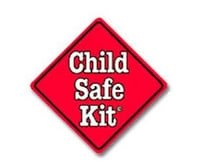Frustrated by trying to install child safety seats in your car? Are you a first-time parent worried that you aren’t doing it right? You are not alone. But there is some reason for hope, at least for those parents who are buying new vehicles.
In the past year, child safety seats have gotten a little bit easier to install in some newer models, according to new ease-of-use ratings released by the Insurance Institute for Highway Safety.
This is the second time the insurance institute has released ratings to show how easy or difficult it is to install a child safety seat in vehicles using the federally mandated LATCH system, which stands for Lower Anchors and Tethers for Children.
Ratings focus on what it is about a vehicle’s LATCH hardware that makes installing a child’s car seat easy or difficult.
When it released the first ratings of 102 vehicles in June 2015, the majority were rated Poor or Marginal and none received the top rating of Good+.
In this second set of ratings, the insurance institute, which is funded by the insurance industry, rated 170 models, mostly 2016 models but some 2017 models as well.
Of the 170 models rated, 89 received ratings of Good or Acceptable. Three of those received the top Good+ rating whereas none did last year. Models with the Good+ rating are the Audi Q7, Lexus RX and Toyota Prius.
“What this means to consumers is that automakers are now paying attention to an area where they haven’t before and it’s going to make it easier to install child restraints,” said Jessica Jermakian, an insurance institute senior research engineer in a telephone interview.
However, 81 were rated Marginal or Poor, so there is still room for improvement.
Children are safer in a vehicle when they are secured in a child restraint appropriate for their age and size. But child safety seats are not necessarily easy to install, especially when they have to be secured using a vehicle’s seatbelt. If the car seats are not properly anchored to the vehicle, a child could be severely injured in a crash.
The LATCH system was conceived as an alternative to having to use a car’s seat belt to anchor a child safety seat. It was designed to be a generic attachment system that would be easier to use than seat belts.
LATCH has two components: One is lower anchors, which are two metal bars in the folds of rear seats where a vehicle’s seat cushion meets the seat back. This is where the lower attachments on a child’s car seat connect.
Tether anchors are the second component. These are where top tether straps on forward-facing car seats attach.
Using a tether strap is important because it keeps a car seat from being thrown too far forward in a crash, which reduces the risk of head and spinal cord injuries. Tether anchors can be found on the seat back, floor, cargo area or ceiling, depending on the vehicle.
LATCH has been required in the rear seats of all passenger vehicles since the 2003 model year, but, parents were still having problems installing car seats.
A study done in 2012 found one reason was that automakers were designing seats in ways that made the LATCH hardware difficult to find and use. That joint study, done by the insurance institute and the University of Michigan Transportation Research Institute, identified key vehicle design elements, which made this task either easy or difficult.
That study found that volunteers were 19 times as likely to use the lower anchors correctly when vehicles met the following three criteria: anchors were not buried deeply in the space where the seat cushion and seat back meet, known as the seat bight; anchors were not obstructed by things such as seat belt buckles and the car seats took less than 40 pounds of force to install.
The Toyota Sienna, a child-hauling minivan, is an example of how quickly changes can be made by a motivated automaker. Last year the Sienna was received the lowest rating of Poor because three of its four LATCH positions had lower anchors that were buried too deeply in the seat bight and the tether anchors were poorly located at the bottom of the seat back near other potentially confusing hardware.
At that time Toyota said it would “continue to enhance the ease of installment of child restraints in future model Siennas.”
It did and Sienna models manufactured after March 2016 are now rated Acceptable.
First, Toyota added high-contrast, two-tone labels to identify the tether anchors and make it easier for parents to spot them in the second and third rows of the minivan, said Jennifer Pelky, senior engineer for interior safety and crash readiness at the Toyota Technical Center.
Next , in the second row Toyota opened up the foam and trim around the lower anchors to improve access, she said. It also reduced the amount of force needed to secure the child safety seat.
According to Jermakian, the most common problem continues to be lower anchors that are buried too deeply in the seat bight, with two-third of the vehicles rated having this problem, the same as last year. Improvements have been made in other areas, however. Last year 69% of seat positions had tether anchors that were easy to find; that has increased to 77 %. Last year 63% of vehicles had lower anchors that were easy to maneuver around; this year it’s 73%.

This placement of a tether anchor in an Audi Q7 is considered to be easy to find and clearly labeled. (Credit: Insurance Institute for Highway Safety)
The purpose of the Good+ rating is to make it possible for more parents to use LATCH in the center seat of the second row.
“Parents are always told that’s the safest place to seat their child and there’s evidence to support that,” Jermakian said. “That position is the farthest away from all the hard points of the vehicle and, in a crash that position is farther away from the parts of the vehicle that could be intruding into the occupant space.”
Also, when parents are bringing newborn babies home from the hospital, that’s the best place to attach a rear-facing child restraint, she said, because the space between the two front seats provides more room to accommodate the longer rear-facing restraint design.
“Many parents want to put their brand new baby in that seating position but very few vehicles allow the use of latch in that position,” Jermakian said. “The Good+ rating is intended to encourage automakers to give that option to parents. We think it’s incredibly important to give parents that option.”





